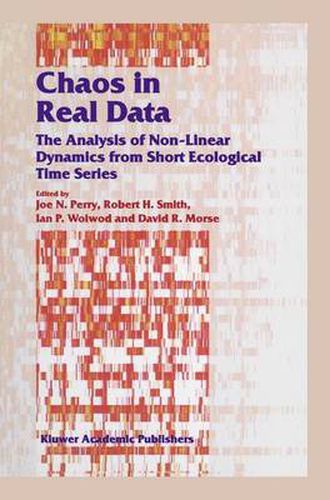Readings Newsletter
Become a Readings Member to make your shopping experience even easier.
Sign in or sign up for free!
You’re not far away from qualifying for FREE standard shipping within Australia
You’ve qualified for FREE standard shipping within Australia
The cart is loading…






This title is printed to order. This book may have been self-published. If so, we cannot guarantee the quality of the content. In the main most books will have gone through the editing process however some may not. We therefore suggest that you be aware of this before ordering this book. If in doubt check either the author or publisher’s details as we are unable to accept any returns unless they are faulty. Please contact us if you have any questions.
Chaos in Real Data studies the range of data analytic techniques available to study nonlinear population dynamics for ecological time series. Several case studies are studied using typically short and noisy population data from field and laboratory. A range of modern approaches, such as response surface methodology and mechanistic mathematical modelling, are applied to several case studies. Experts honestly appraise how well these methods have performed on their data. The accessible style of the book ensures its readability for non-quantitative biologists. The data remain available, as benchmarks for future study, on the worldwide web.
$9.00 standard shipping within Australia
FREE standard shipping within Australia for orders over $100.00
Express & International shipping calculated at checkout
Stock availability can be subject to change without notice. We recommend calling the shop or contacting our online team to check availability of low stock items. Please see our Shopping Online page for more details.
This title is printed to order. This book may have been self-published. If so, we cannot guarantee the quality of the content. In the main most books will have gone through the editing process however some may not. We therefore suggest that you be aware of this before ordering this book. If in doubt check either the author or publisher’s details as we are unable to accept any returns unless they are faulty. Please contact us if you have any questions.
Chaos in Real Data studies the range of data analytic techniques available to study nonlinear population dynamics for ecological time series. Several case studies are studied using typically short and noisy population data from field and laboratory. A range of modern approaches, such as response surface methodology and mechanistic mathematical modelling, are applied to several case studies. Experts honestly appraise how well these methods have performed on their data. The accessible style of the book ensures its readability for non-quantitative biologists. The data remain available, as benchmarks for future study, on the worldwide web.